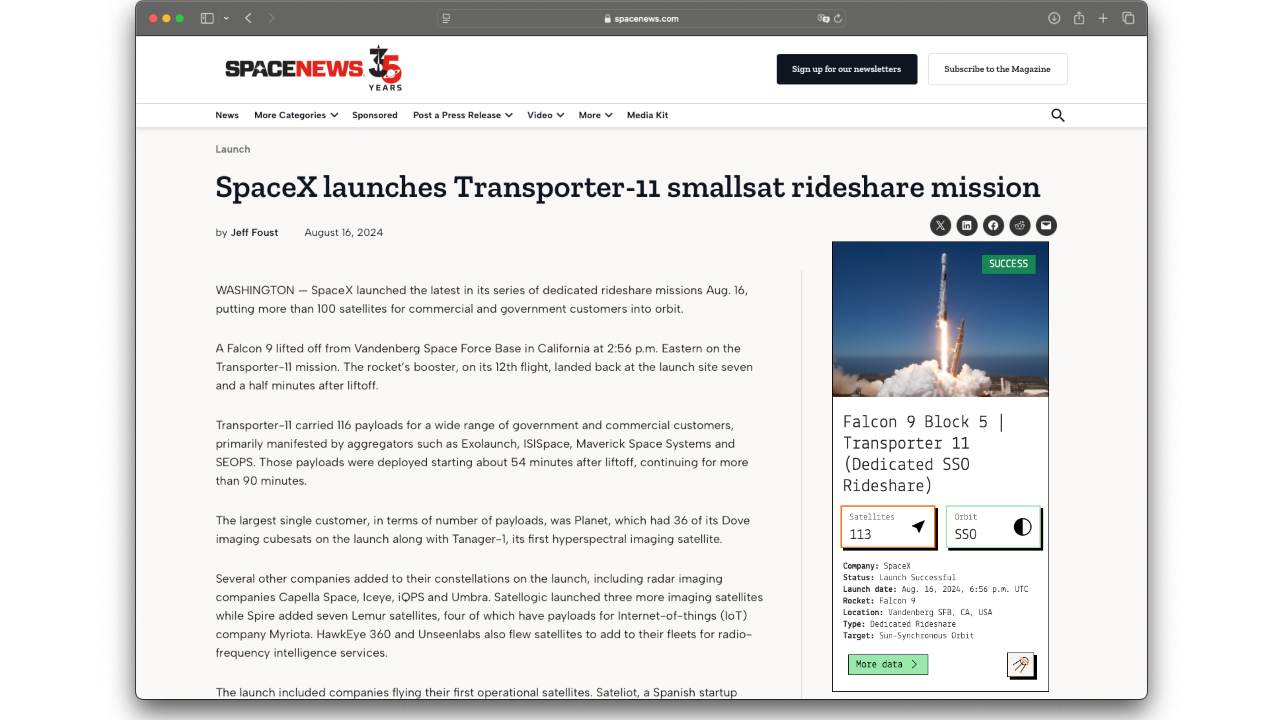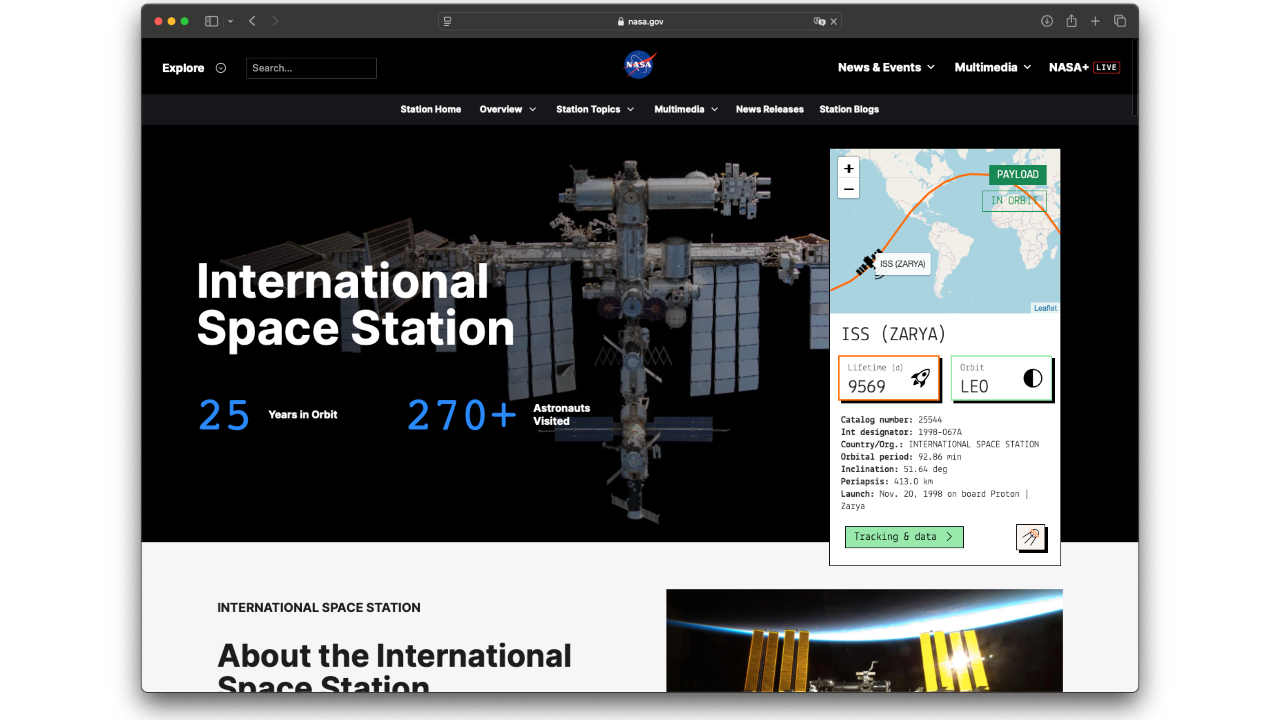Key statistics
Satellite METEOR 2-17 at a glance.
Uptime
13832
Days in orbit
Revolutions
≈ 13.9
Per day
Orbit
LEO
Low Earth Orbit
Inclination
82.5
Latest
Satellite identification and parameters
Extended collection of information and parameters for METEOR 2-17.
Object identification
Identified? True
Debris? False
Object name: METEOR 2-17
International designator: 1988-005A
Object number (NORAD): 18820
Object ID (CCSDS): 18820
Country: COMMONWEALTH OF INDEPENDENT STATES (CIS)
Current information (Y/N): Y
RCS size: LARGE
Orbital parameters
Period: 103.923 minutes
Inclination: 82.5418 deg
SMA: 7322.078 km
Apoapsis: 955.246 km
Periapsis: 932.641 km
RAAN: 112.5884 deg
Eccentricy: 0.0015436
Argument of periapsis: 243.5216 deg
Mean anomaly: 129.4934 deg
Mean motion: 13.85642509 rev/day
Mean motion (dot): 0.0000015 rev/day2
B* drag term: 0.00011872767 1/REarth
Two-line elements (TLE)
Creation date: Dec. 12, 2025, 10:14 a.m.
Reference frame: TEME
Reference center: EARTH
Epoch: Dec. 12, 2025, 7:04 a.m. UTC
TLE line 0: 0 METEOR 2-17
TLE line 1: 1 18820U 88005A 25346.29467311 .00000150 00000-0 11873-3 0 9992
TLE line 2: 2 18820 82.5418 112.5884 0015436 243.5216 129.4934 13.85642509914302
Live tracking on map
Real-time ground track for satellite METEOR 2-17.
In-orbit conjunctions
A list of the most updated potential collisions computed for object METEOR 2-17.
Associated space launch
Second generation soviet meteorological satellite
METEOR 2-17 was lifted into orbit during the mission ‘Tsiklon-3 | Meteor-2 17’, on board a Tsiklon-3 space rocket.
The launch took place on Jan. 30, 1988, 10:59 a.m. from 32/1.
For more information about the launch, click the button.
Tsiklon-3 | Meteor-2 17
Agency: N/A
Status: Launch Successful
Launch date: Jan. 30, 1988, 10:59 a.m. UTC
Rocket: Tsiklon-3
Launch pad: 32/1
Location: Plesetsk Cosmodrome, Russian Federation
...
Latest news about this satellite
There are no fresh news available about this satellite. Check back as we update our databases every day.
Newsletter sign-up
Weekly statistics, charts and insights to help you stay on top of the space industry.




